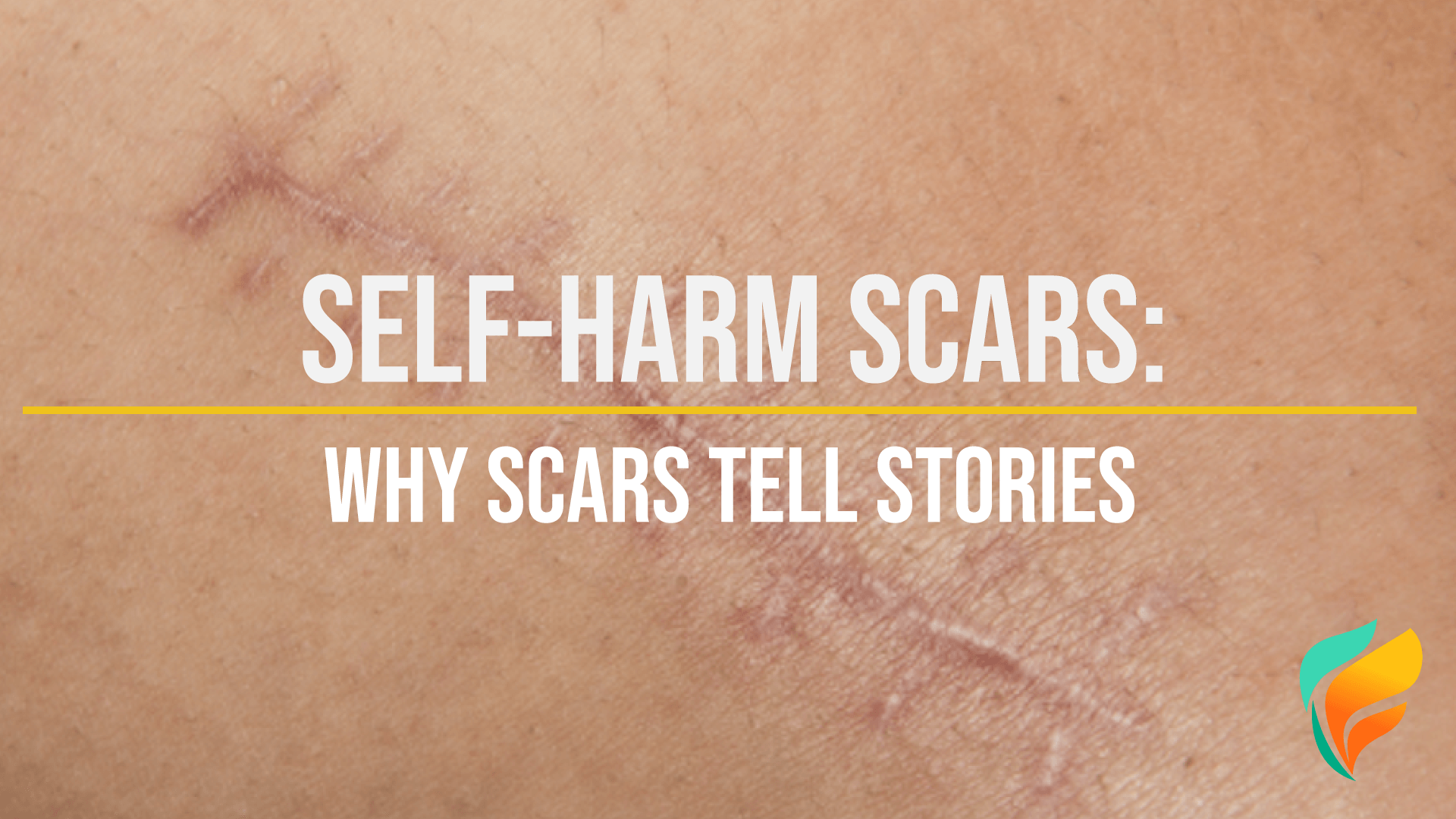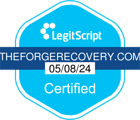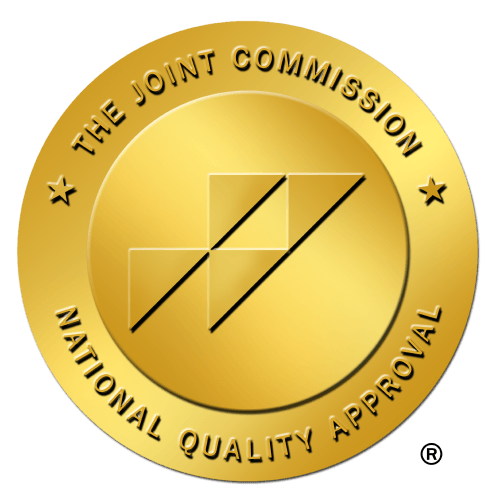Self-Harm Scars: Why Scars Tell Stories About Mental Health and More


Self-harm scars are painful reminders of past traumas and struggles. But they can also be signs of survival and resilience.
Content warning: This blog discusses self-harm in detail.
Self-harm is a deeply personal and often misunderstood coping mechanism used by individuals dealing with overwhelming emotional pain and mental disorders. It's crucial to approach this topic with compassion and empathy, recognizing the complex emotions that drive people to self-harm and the mental pain that leads to suicide attempts.
This article aims to delve deeply into the often-overlooked aspect of self-harm: the scars it leaves on both the body and the mind. We will explore the physical and emotional toll of self-harm scars, strategies for coping and healing, and ways to foster understanding and support for those who bear these marks.
What Are Self-Harm Scars?
Self-harm scars are physical marks that remain on the body after someone has intentionally injured themselves as a way to cope with emotional pain, stress, or trauma. These injuries can include cutting, burning, hitting, or any other form of harm that results in immediate physical damage. The resulting scars serve as a visible reminder of the emotional and psychological distress that an individual has experienced.
People who engage in self-harm often do so because they are struggling to manage overwhelming feelings or situations and might not have healthier coping mechanisms in place. The scars can carry a lot of emotional significance and can be sources of shame or embarrassment, as well as markers of a difficult period in someone's life.
It's important to approach the topic of self-harm scars with sensitivity and understanding, recognizing that each person's journey toward healing is personal and complex.
Physical and Emotional Impact of Self-Harm Scars
Self-harm scars, the visible aftermath of self-injury, carry physical and emotional significance. Physically, they can range from superficial cuts to more severe wounds, and their visibility can vary based on location and skin type. However, it's the emotional impact that often lingers:
Shame and Stigma: Many individuals with self-harm scars experience shame and fear of judgment from others, which can exacerbate their emotional distress.
Body Image Issues: Self-harm scars can lead to negative body image perceptions, causing discomfort with one's own body.
Reminders of Pain: Scars can be constant reminders of past pain and emotional struggles, making it difficult to move forward.
Are You Struggling with Mental Health or Addiction?
We Can Help. Call Us Now!
CALL: 877-839-1772
Long-Term Consequences of Self-Harm Scars
The consequences of self-harm scars extend far beyond their physical appearance, contributing to a mental health crisis. They can have lasting psychological and emotional effects, such as:
Low Self-Esteem
Self-harm scars can contribute to low self-esteem and a negative body image. Individuals may feel ashamed or unattractive due to their scars, which can erode their self-worth.
Isolation
The fear of judgment and stigma can lead individuals to isolate themselves, avoiding situations where their scars might be exposed. This isolation can further exacerbate feelings of loneliness, depression, and mental health crises.
Triggering Flashbacks
Scars can serve as triggers, bringing back memories of the pain and emotional distress that led to self-harm in the first place. These flashbacks can intensify emotional struggles.
Interference with Daily Life
Sometimes, self-harm scars can interfere with daily activities. For instance, scars on the arms or legs might limit clothing choices, causing discomfort in hot weather or during social events.
Barriers to Seeking Help
The presence of self-harm scars may create barriers to seeking professional help or opening up about one's struggles. Fear of judgment or misunderstanding can deter individuals from getting their needed support.
Are You Struggling with Mental Health or Addiction?
We Can Help. Call Us Now!
CALL: 877-839-1772
The Emotional Toll of Self-Harm Scars
Self-harm scars, a lasting testament to past struggles, bear the physical and profound emotional scars that individuals often carry.
Emotional Distress
Self-harm scars can be a source of profound emotional distress for those who bear them, especially during a mental health crisis. Individuals may experience a complex mix of regret, guilt, and sadness. These scars are tangible reminders of times when emotional pain seemed overwhelming, leading to a sense of emotional burden.
Moreover, as these scars are often hidden, they can create a constant internal turmoil, a secret world of suffering that individuals may feel compelled to conceal. This secrecy can intensify emotional distress, making it difficult for individuals to open up about their experiences and seek the support they need.
Shame and Stigma
Shame is a common emotion associated with self-harm scars. Individuals may feel ashamed of their past actions, viewing self-harm as a coping mechanism they wish they had never resorted to. This shame can be exacerbated by societal stigma and misconceptions surrounding self-harm, which often cast judgment rather than understanding.
The fear of judgment or rejection from others can lead to isolation, further deepening emotional wounds. Many individuals with self-harm scars may go to great lengths to hide them, avoiding situations where their scars might be exposed. This self-imposed isolation can reinforce shame and contribute to a sense of loneliness.
Impact on Self-Esteem and Body Image
Self-esteem and body image are profoundly influenced by self-harm scars. Individuals may perceive their scars as flaws, leading to a negative self-image. They might internalize a belief that their scars make them unattractive or damaged, which can erode self-confidence.
Furthermore, the act of self-harm itself can be seen as a way of exerting control over one's body when other aspects of life seem uncontrollable. However, as the scars persist, they can become a reminder of a lack of control over destructive behaviors, further impacting self-esteem.
Mental Health Implications
The emotional toll of self-harm scars can extend to mental health. Individuals with self-harm scars are at an increased risk of developing or exacerbating mental health conditions, such as depression, anxiety, or post-traumatic stress disorder. Coping with the emotional burden of scars can become overwhelming, leading to deterioration in mental well-being.
Humanizing the Experience
To truly understand the emotional toll of self-harm scars, humanizing this experience is essential. Real-life stories and personal anecdotes can shed light on the emotional journey of those who bear these scars. These narratives underscore the resilience and strength of individuals confronting their past while working towards healing and self-acceptance.
Healing and Coping Mechanisms
Dealing with self-harm urges is a challenging journey. Still, navigating it towards a healthier and happier life is possible. Let us explore some practical strategies for coping with those urges and why seeking professional help is crucial.
Seeking Professional Help
When addressing self-harm urges, a critical action is to connect with a mental health expert or professional for guidance and support. Therapists and counselors are equipped with the knowledge and skills to guide you through this difficult process. They can assist you in identifying the underlying reasons for self-harm and adopting healthier coping mechanisms. Here are a few particularly effective therapy options:
Therapy and Counseling
Cognitive-behavioral therapy (CBT) identifies and changes negative thought patterns and triggers. It's highly effective in addressing self-harm behaviors.
Dialectical Behavior Therapy (DBT) teaches distress tolerance, emotional regulation, and interpersonal skills. Its purpose is to assist you in handling strong emotions without turning to self-injury.
Mindfulness-based therapies, such as Mindfulness-Based Stress Reduction (MBSR), teach you to stay present in the moment and handle your emotions in a non-judgmental way.
Self-Help Techniques
Alongside professional help, there are self-help techniques that you can incorporate into your daily life to manage self-harm urges:
Mindfulness: Engaging in mindfulness involves being completely present in the current moment. It can help you become more aware of your thoughts and emotions without passing judgment, allowing you to manage distressing feelings without acting on them.
Journaling: Keeping a journal can be incredibly therapeutic. It provides a private environment for you to articulate your thoughts and feelings, monitor your triggers, and recognize recurring patterns in your self-harming behavior.
Creative Expression: Engaging in creative activities, whether it's art, writing, or music, can provide an outlet for your emotions.
Physical Activity: Regular exercise has been proven to reduce stress and improve mood by releasing endorphins, natural mood lifters.
Support Networks: Sharing your feelings and experiences with trusted friends, family members, or support groups can provide emotional support and alleviate the isolation often accompanying self-harm.
Developing a Safety Plan
Developing a safety strategy is a proactive approach to coping with self-harming impulses. It involves identifying your triggers and warning signs and listing coping strategies. Importantly, it should also include emergency contacts and professionals you can contact during a crisis.
Are You Struggling with Mental Health or Addiction?
We Can Help. Call Us Now!
CALL: 877-839-1772
The Role of Stigma and Judgment
It's important to acknowledge that stigma and judgment can surround conversations about self-harm scars within society and sometimes within families and friend circles. Stigmatizing attitudes can further isolate individuals struggling with self-harm, making it even harder for them to seek help.
To combat stigma and judgment:
Educate yourself about self-harm and mental health to dispel misconceptions.
Encourage open and non-judgmental discussions within your family or social circle.
Challenge stigmatizing beliefs and language when you encounter them.
Support and promote mental health awareness campaigns to reduce societal stigma.
Reclaiming Body and Identity
For individuals who have faced the challenges of self-harm scars, the idea of tattooing over these scars has emerged as a powerful means of reclaiming not only their bodies but also their identities. This practice goes beyond aesthetics; it serves as a form of empowerment and self-expression.
Empowerment Through Tattooing
Reclaiming Control: Self-harm scars can often symbolize personal struggle and vulnerability. Tattooing over these scars can be an empowering act of taking control over one's body and narrative.
Turning Pain into Art: Transforming scars into art allows individuals to convert a painful chapter of their lives into something beautiful and meaningful. This process can be cathartic and aid in the healing journey.
A Visible Reminder of Resilience: A tattoo over a self-harm scar can be a constant reminder of one's resilience and ability to overcome adversity. It becomes a visible testament to personal strength.
Self-Expression Through Tattoos
Narrative Tattoos: Many choose tattoos representing their journey and growth, including symbols of hope, recovery, or personal mantras.
Artistic Expression: Tattoos provide a canvas for artistic expression. People often work closely with tattoo artists to create custom designs that hold personal significance.
Connecting with Others: Tattoos can also facilitate connections with similar experiences. They can spark conversations, build community, and reduce the stigma associated with self-harm scars.
Embracing Healing
For those with self-harm scars, the journey to healing and self-acceptance is deeply personal and transformative. It's a path defined by self-compassion, resilience, and the discovery that visible or hidden scars can be a part of a larger story of growth and inner strength.
Healing from self-harm scars isn't a straightforward path. Frequently, this involves reaching out to a qualified expert, such as a therapist or counselor, for assistance. This journey can be demanding, yet it's a testament to our strength and resilience. It's a voyage of self-discovery, where we learn healthier ways to cope with our emotions and develop a deeper understanding of ourselves.
Self-harm scars may be a part of one's past, but they do not determine the future. Individuals can move forward toward a hopeful and empowered life with the right support, self-compassion, and determination. Contact mental health experts, counselors, or support systems for assistance. Healing is not only a possibility but a reality.
Are You Struggling with Mental Health or Addiction?
We Can Help. Call Us Now!
CALL: 877-839-1772
Scars of Survival: We're Here to Help You Heal
Self-harm scars tell stories of pain, resilience, and survival. Breaking the silence is the first step towards healing.
At The Forge Recovery Center, we provide compassionate support and effective treatments tailored to your needs. Guided by a trauma-informed approach, we'll help you safely explore the roots of your issues and deal with them effectively. We know you're strong – you're a survivor. We'll help you build a life worth living.
If you or a loved one is struggling with self-harm, reach out to us. We can help you find the strength and resilience you have in you to be stronger than ever.
Are You Struggling with Mental Health or Addiction?
We Can Help. Call Us Now!
CALL: 877-839-1772





